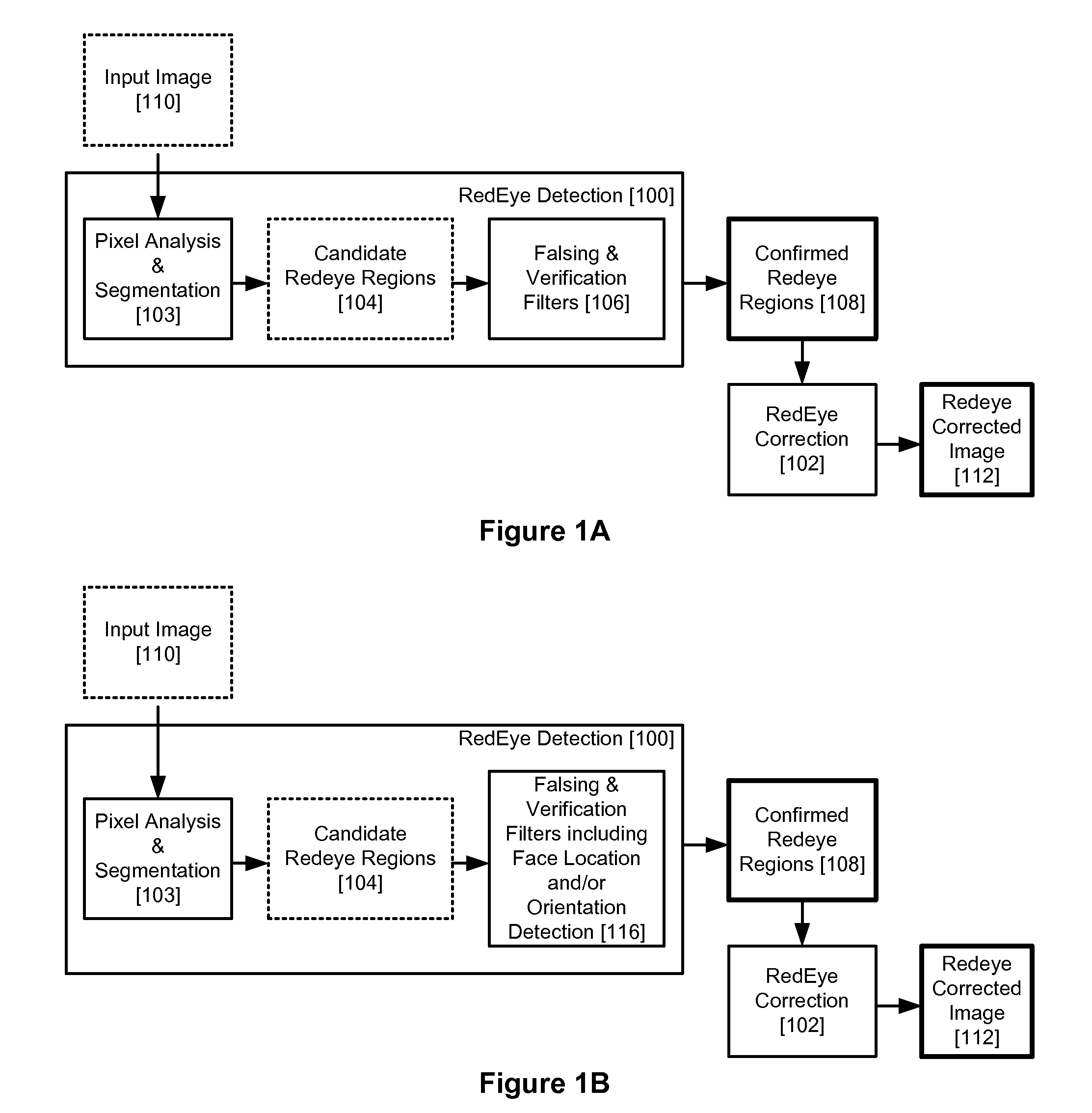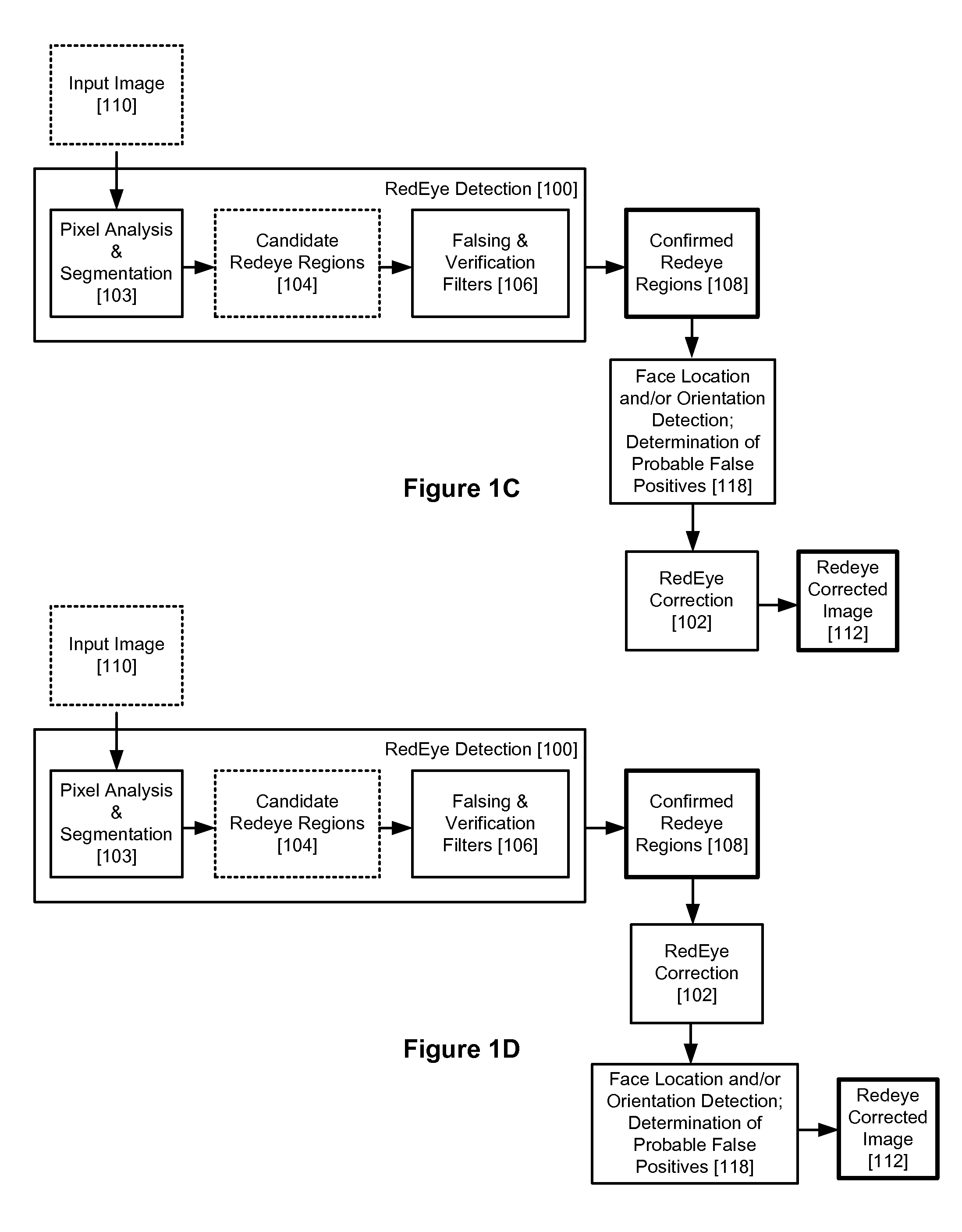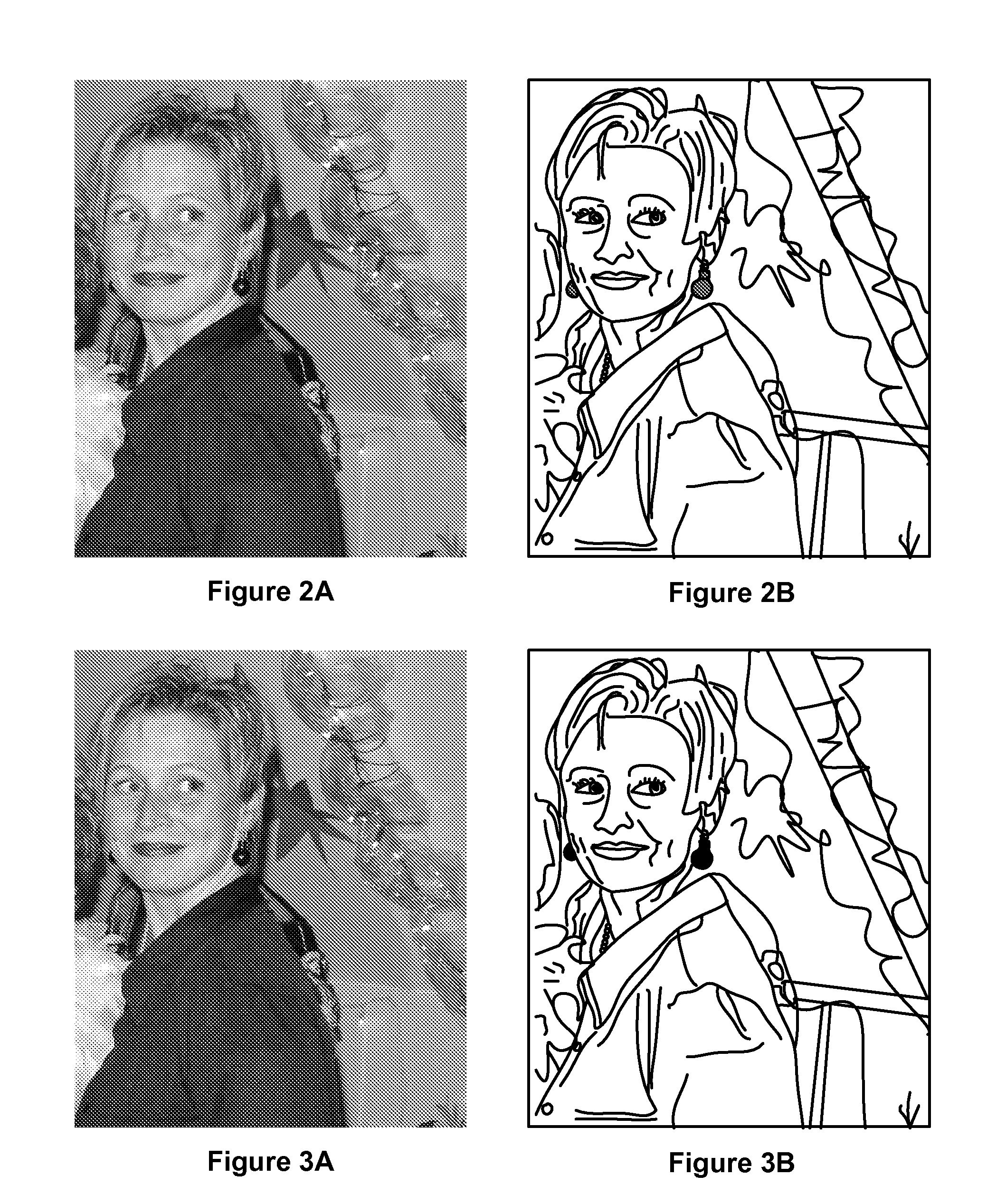Red Eye False Positive Filtering Using Face Location and Orientation
a false positive and face location technology, applied in the field of red eye false positive filtering using face location and orientation, can solve the problems of high computation and memory resource requirements of face detection-based automatic redeye reduction techniques, visual displeasing images, and inability to detect faces that are rotated in-plane or out-of-plane with respect to the image plan
- Summary
- Abstract
- Description
- Claims
- Application Information
AI Technical Summary
Benefits of technology
Problems solved by technology
Method used
Image
Examples
Embodiment Construction
[0020]A redeye filter process is illustrated in FIG. 1A. An input image is first analyzed by a redeye detection stage 100 at a pixel level 103 and segmented into candidate redeye regions 104. A further series of falsing and verification filters 106 are then applied to the candidate regions and a set of confirmed redeye regions 108 is thereby determined. A correction filter (pixel modifier) 102 is next applied to the confirmed regions and a final image 112, corrected for redeye, is generated.
[0021]In embodiments herein, a face detection algorithm is applied either as a component of an advantageous falsing and verification filter 106, or after the set of confirmed red eye regions is initially determined at 108. This face detection algorithm determines location and / or orientation of the face. This provides information as to where specifically that any eyes probably exist and / or where specifically that eyes probably do not exist within the image.
[0022]FIG. 1B illustrates a process inclu...
PUM
 Login to View More
Login to View More Abstract
Description
Claims
Application Information
 Login to View More
Login to View More - R&D
- Intellectual Property
- Life Sciences
- Materials
- Tech Scout
- Unparalleled Data Quality
- Higher Quality Content
- 60% Fewer Hallucinations
Browse by: Latest US Patents, China's latest patents, Technical Efficacy Thesaurus, Application Domain, Technology Topic, Popular Technical Reports.
© 2025 PatSnap. All rights reserved.Legal|Privacy policy|Modern Slavery Act Transparency Statement|Sitemap|About US| Contact US: help@patsnap.com



